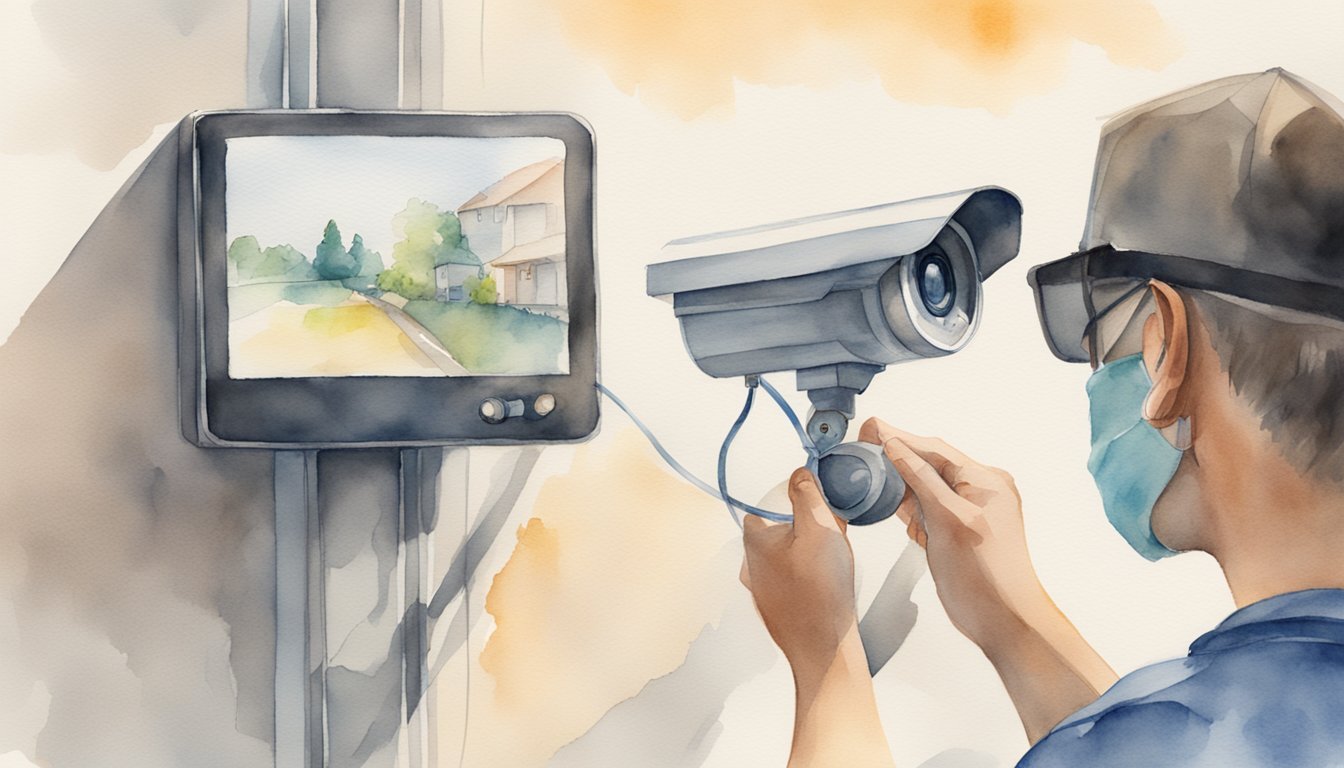Understanding Wired Security Camera Basics
Wired security cameras are integral to modern surveillance systems, offering reliable video feeds that require physical connections to power and data storage devices. This section delves into the core components and varieties of wired cameras, along with their notable features.
Defining Wired Security Cameras
Wired security cameras require a direct connection, typically through coaxial, Ethernet, or power cables, to a recording device or network. Unlike their wireless counterparts, they are not susceptible to interference from other devices and tend to be a more secure option due to the physical nature of their connectivity.
Types of Wired Security Cameras
There are several types of wired cameras, primarily differentiated by their method of data transmission and power source. Coaxial cable cameras, commonly known as analog cameras, connect to a DVR to record footage. Newer technologies, like Power over Ethernet (PoE) cameras, simultaneously supply power and transmit data through a single Ethernet cable, connecting to an NVR system. These cameras are suitable for both indoor security camera and outdoor setups.
Key Features of Wired Cameras
Wired home security cameras come with a range of features that enhance their surveillance capabilities. High video resolution, such as 1080p HD and 4K, assures detailed footage. Those with color night vision provide clear, colorized videos even in low-light conditions. A broad field of view ensures comprehensive coverage of an area. Advanced motion detection and smart detection functionalities allow cameras to alert users to movement and categorize different types of motion. For storing the footage, users can choose between local storage options, like DVRs or NVRs, or opt for secure cloud storage. Wired cameras can also include audio features, ranging from simple audio recording to two-way audio communication, offering an additional layer of monitoring and interactivity.
Selecting and Installing Your Wired Security Camera System

When embarking on the journey of enhancing home security with cameras, the ultimate success hinges on the selection of appropriate hardware and the precision of the installation process.
Choosing the Right Camera for Your Needs
A paramount step is identifying a camera that aligns with one’s specific requirements. It is wise to procure a wired security camera system that caters to anticipated environmental conditions. Cameras should offer sufficient resolution for clear images and an adequate field of view to cover the intended area. Additionally, features like motion detection, night vision, and weather resistance are pivotal in fortifying against burglaries. Budget considerations often steer decisions towards affordable choices but investing in premium features can prove cost-effective when considering long-term reliability and performance.
- Essential Features:
- High-resolution imagery for clear footage
- Comprehensive field of view to surveil large areas
- Motion detection to alert for unexpected movements
- Robust build for weather resistance
Installation Tips and Best Practices
Even a system that is relatively easy to install necessitates an adherence to some core principles to ensure operational efficacy. Primarily, the positioning of cameras should be strategic, both for optimal coverage and discrete operation. The routing of cables, preferably through walls and attics, needs careful planning to prevent exposure and tampering. For those devoid of technical prowess, professional installation may avert potential complications. Once installed, a through testing of the system is critical to confirm functionality.
-
Planning:
- Determine optimal camera placement for surveillance coverage
- Plan cable routes that are secure and inconspicuous
-
Implementation:
- Install cameras and route cables with precision
- Test the system comprehensively for functionality
Integrating Wired Cameras with Smart Home Systems
Seamless incorporation of cameras into smart home systems introduces convenience and augmented security. Wired cameras, albeit less flexible than their wire-free counterparts, boast stable internet connectivity which is crucial for real-time monitoring and professional monitoring services. Integration enables interaction with devices like video doorbells and smart locks, yielding a comprehensive home security system. Ensure the camera system possesses compatibility features to link with current smart home platforms and check for software that facilitates the integration process.
- Integration Steps:
- Check system compatibility with existing smart home platforms
- Use appropriate software for integration

